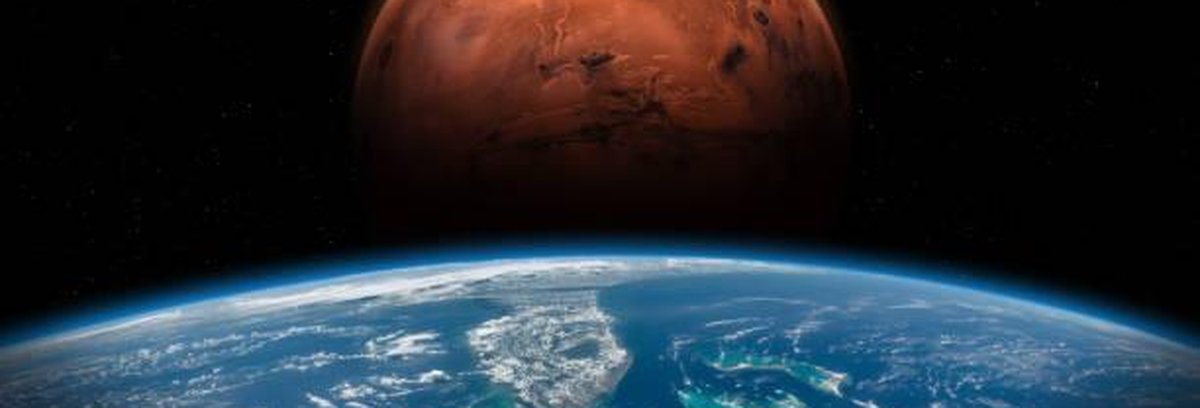For several years, scientists have been investigating suggestions that Mars may have harbored water lakes billions of years ago. Recently, a new discovery strengthened this idea and showed that the red planet may have supported life in the past; One study suggests that the celestial body also has hot water.
A new article published in the scientific journal Science Advances, Discovery of a zircon grain in the Martian meteorite NWA7034.
Researchers at Curtin University in Australia determined that the meteorite is approximately 2 billion years old. But, The analysis shows that the zircon grain is even older, possibly forming around 4.45 billion years ago.
Meteorite NWA7034 is also affectionately called ‘Black Beauty’ due to its polished appearance. Its discovery took place during an expedition in the Sahara Desert in 2011.
So what does this have to do with hot water? The zircon sample found in the meteorite contains evidence of ‘water-rich fluids’. This suggests that the rock may have formed in hydrothermal vents on Mars.
“Micro- and nanoscale microscopy of a single shock-impacted zircon found in the regolith breccia meteorite NWA7034 reveals textural and chemical indicators of hydrothermal conditions on Mars at the time of its crystallization 4.45 billion years ago,” the researchers explain in the introduction to the study.
Mars and hot water
One of the unique features of the studied meteorite is its composition, which is formed by the combination of materials from different regions into a single rocky body. This feature can help scientists solve different mysteries about Mars.
Although the discovered zircon was thinner than a human hair, it revealed valuable information about its history. Using microscopic observation instruments, researchers detected the presence of aluminum, yttrium and sodium in the sample.
Comparing the formation of this structure with similar processes occurring on Earth, researchers observed similarities with samples taken from the Olympic Dam underground mine in Australia. They believe the zircon may have formed in a hydrothermal vent on Mars, just like in this Australian site.
In other words, the study not only suggests that Mars had hot springs billions of years ago, but also comes to a much more interesting conclusion: the The possibility that the planet may have provided a suitable environment to sustain life forms as we currently know them.
In any case, this discovery is unique and the hypothesis has not yet been confirmed. Therefore, researchers plan to analyze other zircon grains extracted from the NWA7034 meteorite.
“This new study takes us a step forward in understanding early Mars by identifying clear evidence of water-rich fluids during grain formation, providing geochemical signatures of water in the oldest known Martian crust,” said one of the study’s authors and co-authors. Aaron Cavosie at Curtin University.
Follow the latest developments in astronomy and Earth science at TecMundo. If you wish, take the opportunity to understand how Mars increases the circulation of the Earth’s oceans every 2.4 million years. Until later!
Source: Tec Mundo
I’m Blaine Morgan, an experienced journalist and writer with over 8 years of experience in the tech industry. My expertise lies in writing about technology news and trends, covering everything from cutting-edge gadgets to emerging software developments. I’ve written for several leading publications including Gadget Onus where I am an author.













